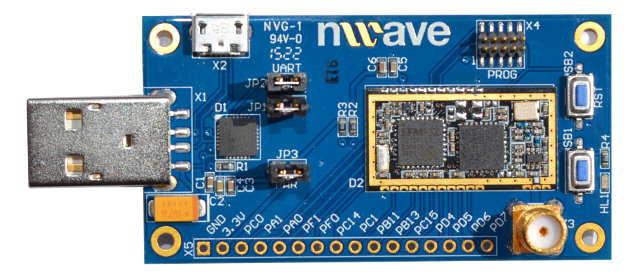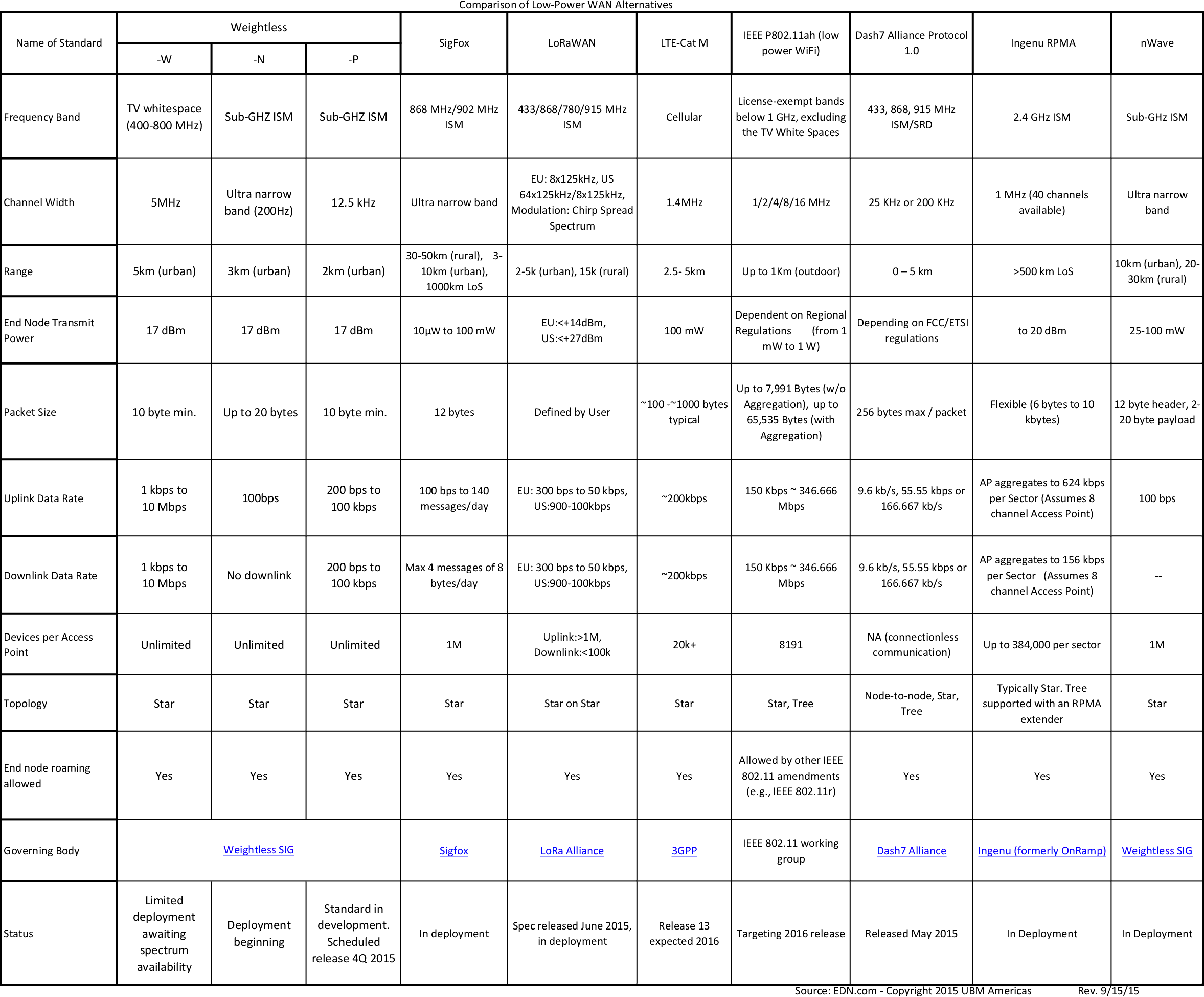The first version of the Weightless standard aiming at lowering cost of IoT communications was published in 2013, but so far development kits were nowhere to be found. Nwave has now launched a Weightless-N SDK using sub-GHz spectrum, but not the white space spectrum used by Weightless-W, probably due to regulatory hurdles. Specifications and features of Nwave development board: MCU – Silicon Labs EFM32G210F128 ARM Cortex M3 MCU @ 32 MHz with 128KB flash, 16KB SRAM Connectivity – RM3 radio module (868MHz) and antenna connector (X3) USB – X1 USB port for connection to PC or UART interface, X2 micro USB port Debugging – UART, and 10-pin JTAG connector (X4) Expansion header – 16 through holes for GND, 3.3V, GPIOs, ADC, Timers output, I2C, etc… (X5) Misc – Three Jumpers for UART and other selections (TBD), reset buttons for USB ports? Power – 5V via USB ? Dimensions – N/A […]
Comparison Table of Low Power WAN Standards for Industrial Applications
WiFi, Bluetooth and Zigbee are commonly found in consumer devices part of the “IoT ecosystem”, but the range, cost, power consumption, and/or scalability of these wireless standards are not suitable. For example, agricultural and forestry applications normally require long distance, and smart parking or city lighting may requires scalability to a great number of nodes, so alternatives are needed. EDN wrote a thorough article comparing 10 alternative wireless standards: Weightless-W, Weightless-N, Weightless-P, SigFox, LoRaWAN, LTE-Cat M, IEEE P802.11ah, Dash7, Ingenu RPMA, and nWave. The table includes the frequency band, channel width, range, transmit power, packet size (minimal or maximal), downlink and uplink data rates, maximum number of connected devices, topology, roaming capability, and status. If you had to implement something today, four to five solutions are “in deployment”: SigFox, Ingenu RPMA, nWave, LoRa, and possibly Dash7, while the other are only starting to get deployed, or will be finalized in […]




